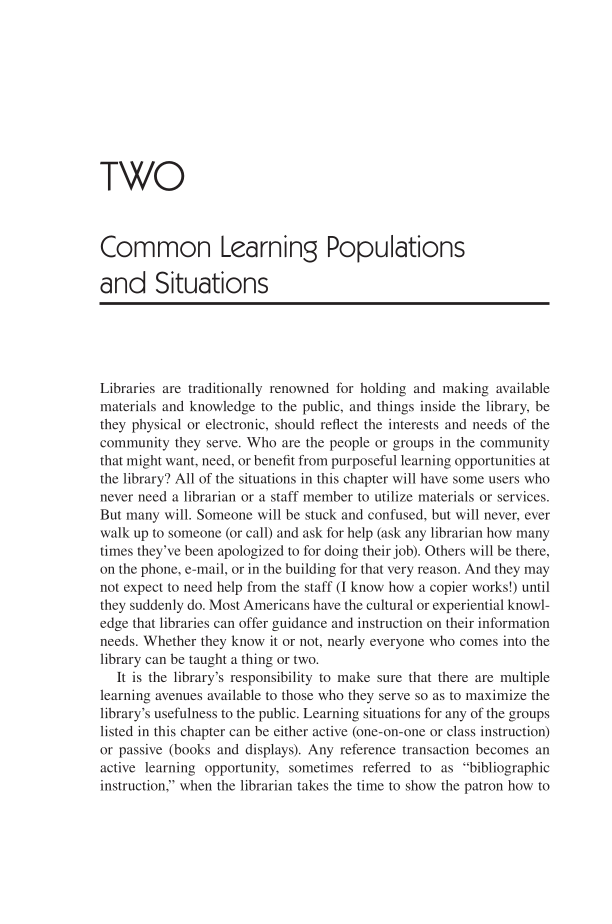TWO Common Learning Populations and Situations Libraries are traditionally renowned for holding and making available materials and knowledge to the public, and things inside the library, be they physical or electronic, should reflect the interests and needs of the community they serve. Who are the people or groups in the community that might want, need, or benefit from purposeful learning opportunities at the library? All of the situations in this chapter will have some users who never need a librarian or a staff member to utilize materials or services. But many will. Someone will be stuck and confused, but will never, ever walk up to someone (or call) and ask for help (ask any librarian how many times they’ve been apologized to for doing their job). Others will be there, on the phone, e-mail, or in the building for that very reason. And they may not expect to need help from the staff (I know how a copier works!) until they suddenly do. Most Americans have the cultural or experiential knowl- edge that libraries can offer guidance and instruction on their information needs. Whether they know it or not, nearly everyone who comes into the library can be taught a thing or two. It is the library’s responsibility to make sure that there are multiple learning avenues available to those who they serve so as to maximize the library’s usefulness to the public. Learning situations for any of the groups listed in this chapter can be either active (one-on-one or class instruction) or passive (books and displays). Any reference transaction becomes an active learning opportunity, sometimes referred to as “bibliographic instruction,” when the librarian takes the time to show the patron how to
Document Details My Account Print multiple pages
Print
You have printed 0 times in the last 24 hours.
Your print count will reset on at .
You may print 0 more time(s) before then.
You may print a maximum of 0 pages at a time.














































































































































